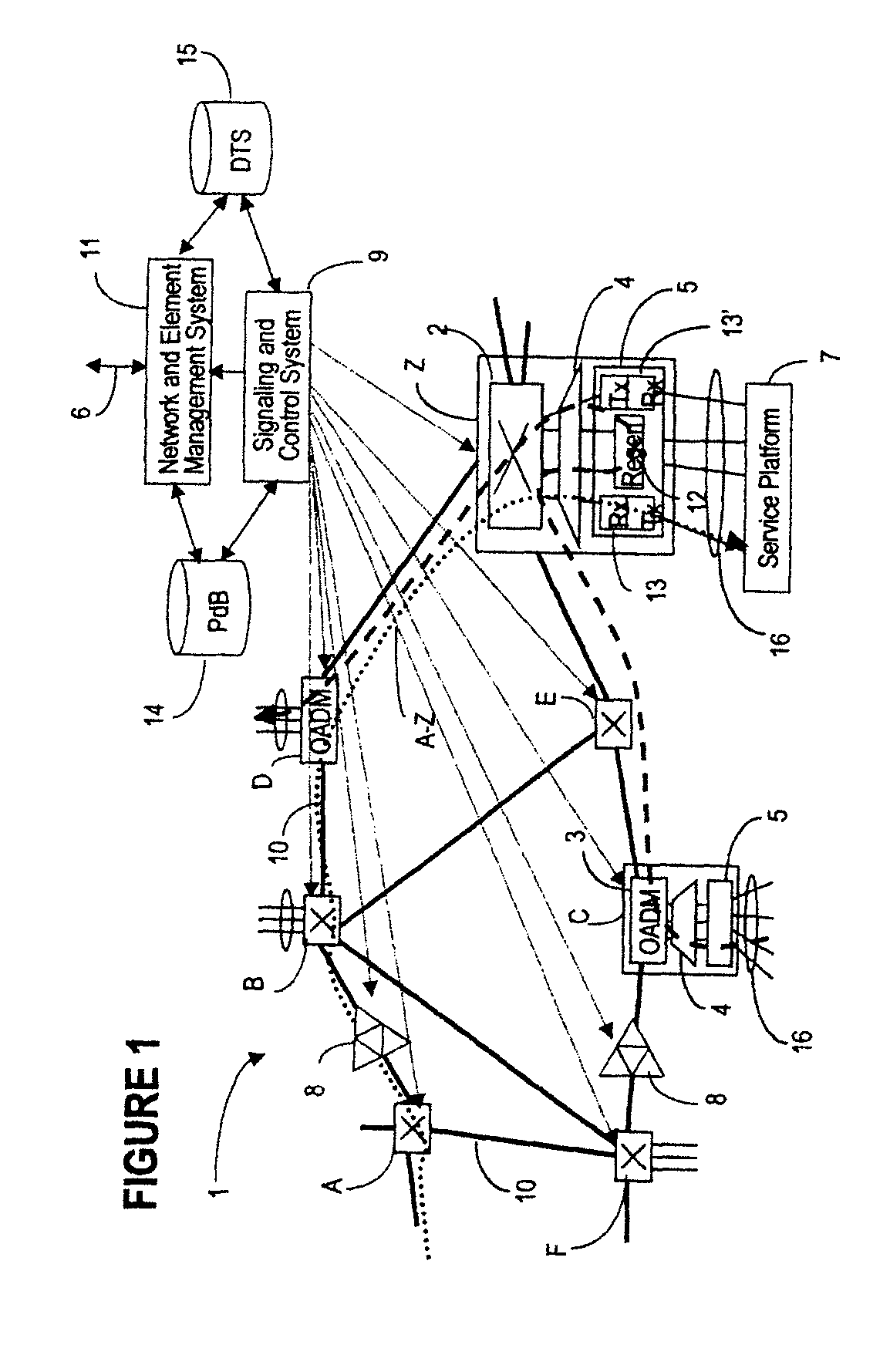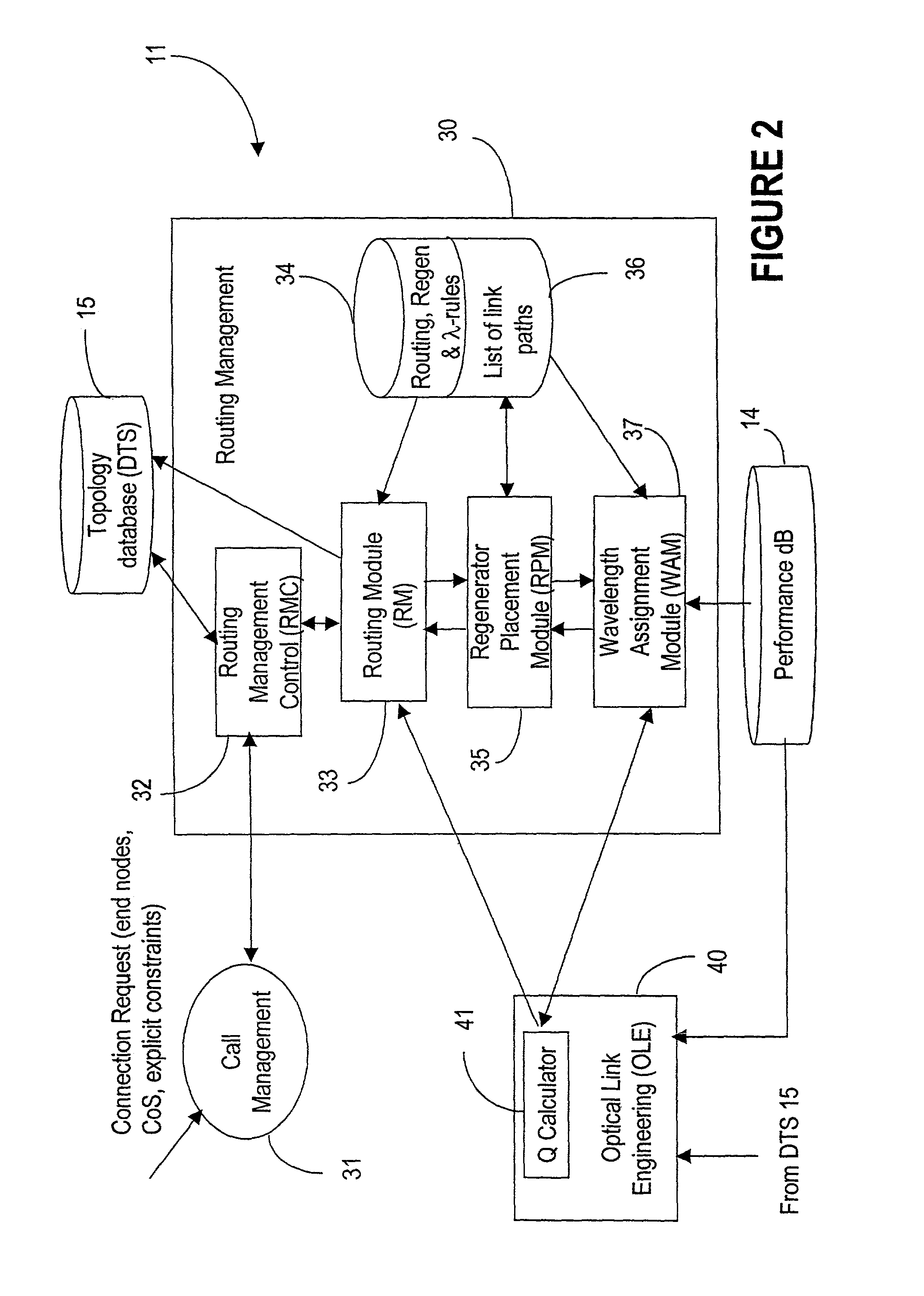Regenerators placement mechanism for wavelength switched optical networks
- Summary
- Abstract
- Description
- Claims
- Application Information
AI Technical Summary
Benefits of technology
Problems solved by technology
Method used
Image
Examples
Embodiment Construction
[0028]An example of a wavelength switched optical network (or automatically switched network, or agile network) is shown in FIG. 1. The DWDM layer of network 1 is mesh-connected with wavelength switching nodes (also called flexibility points or flexibility sites) instead of traditional pt-pt nodes. Connections are set-up and removed on request with optimal use of optical-to-electrical-to-optical (OEO) conversion. The architecture and operation of this network is described in the above-referenced co-pending patent application Ser. No. 09 / 876,391, which is incorporated herein by reference.
[0029]To summarize, network 1 comprises bidirectional fiber links 10 connecting a plurality of nodes, which are nodes A, B, C, D, E, F, Z in the example of FIG. 1. These nodes may be switching nodes A, B, E, F, Z, or OADM (optical add / drop multiplexing) nodes C, D. Local traffic 16 originating and terminating on a service platform 7 (a router, an ATM switch, an EXC, etc.) accesses the network 1 at a ...
PUM
 Login to View More
Login to View More Abstract
Description
Claims
Application Information
 Login to View More
Login to View More - R&D
- Intellectual Property
- Life Sciences
- Materials
- Tech Scout
- Unparalleled Data Quality
- Higher Quality Content
- 60% Fewer Hallucinations
Browse by: Latest US Patents, China's latest patents, Technical Efficacy Thesaurus, Application Domain, Technology Topic, Popular Technical Reports.
© 2025 PatSnap. All rights reserved.Legal|Privacy policy|Modern Slavery Act Transparency Statement|Sitemap|About US| Contact US: help@patsnap.com



